
Explosive Images: Hawaii's Kilauea Erupts for 30 Years
Pahoehoe flow
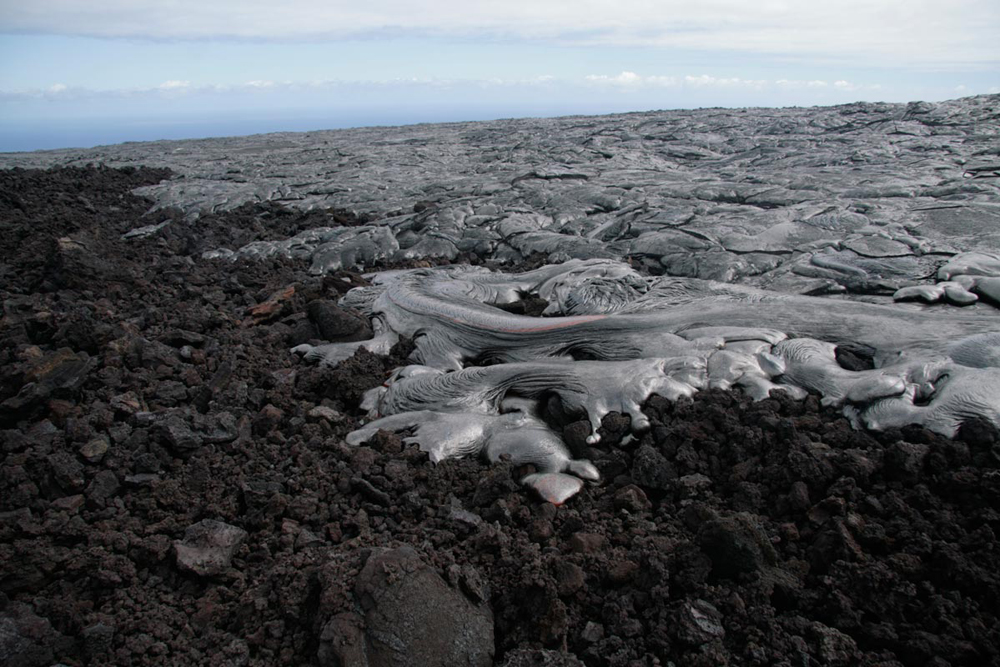
A small active pahoehoe flow overplating an older a'a flow on the coastal plain below Pu'u O'o crater in Hawaii. Taken Feb. 25, 2010. Pahoehoe is smooth, basaltic lava that flows forward in lobes, while a'a has a rougher surface made up of broken lava blocks.
New land
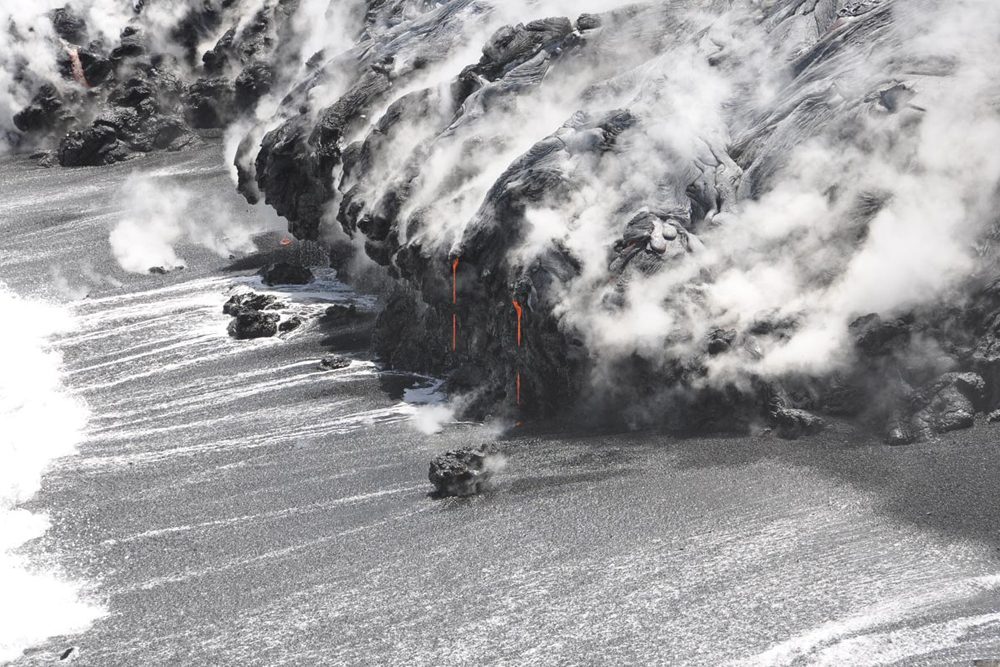
Lava enters the ocean in May 2010 from the Kalapana flow at Kilauea volcano in Hawaii.
Lava sampling
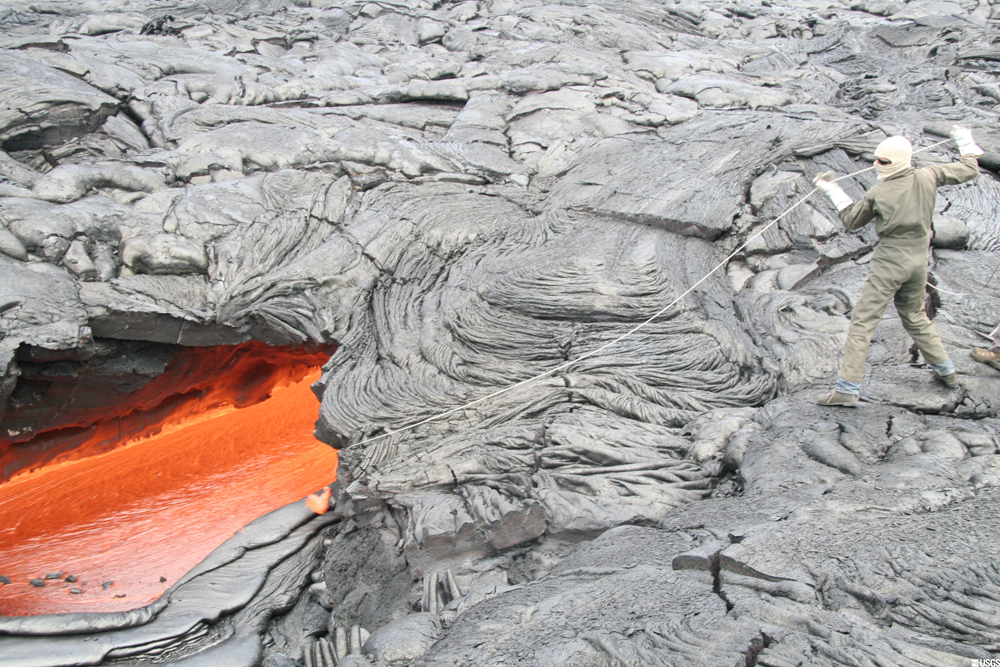
A geologist taking a sample on July 14, 2010, from a recently formed skylight on the Quarry flow lava tube. The Quarry lava flow began in 2010.
Burning palms
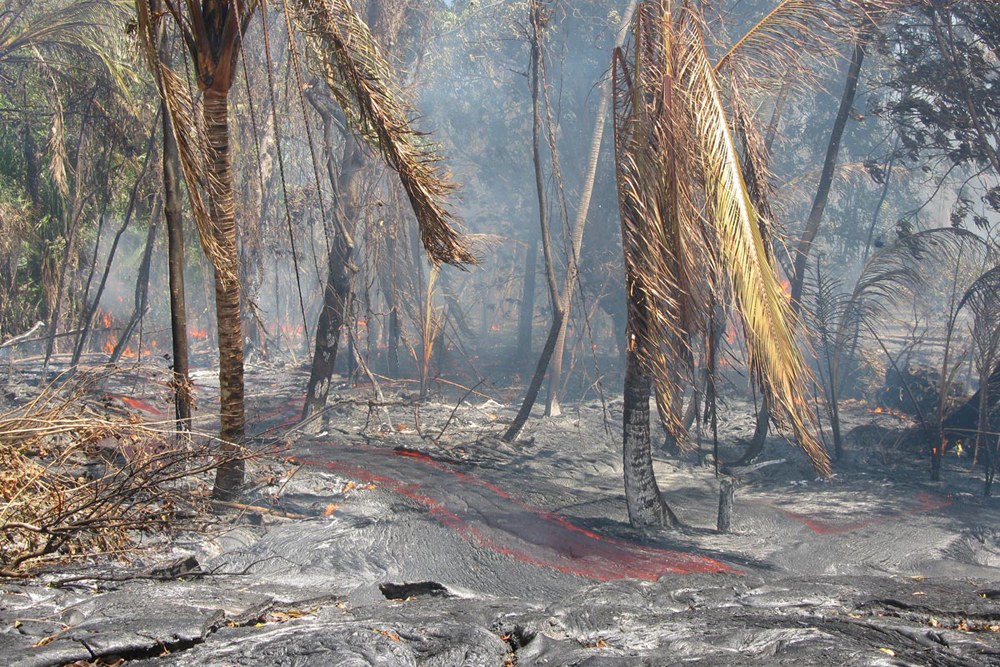
A 3-foot-wide (1 meter) channel feeds a lava surge that broke out from an active flow in the Kalapana Gardens subdivision near Kilauea volcano, sending a fast-moving but relatively small flow through coconut palms in late July 2010.
Lava exiting lava tube
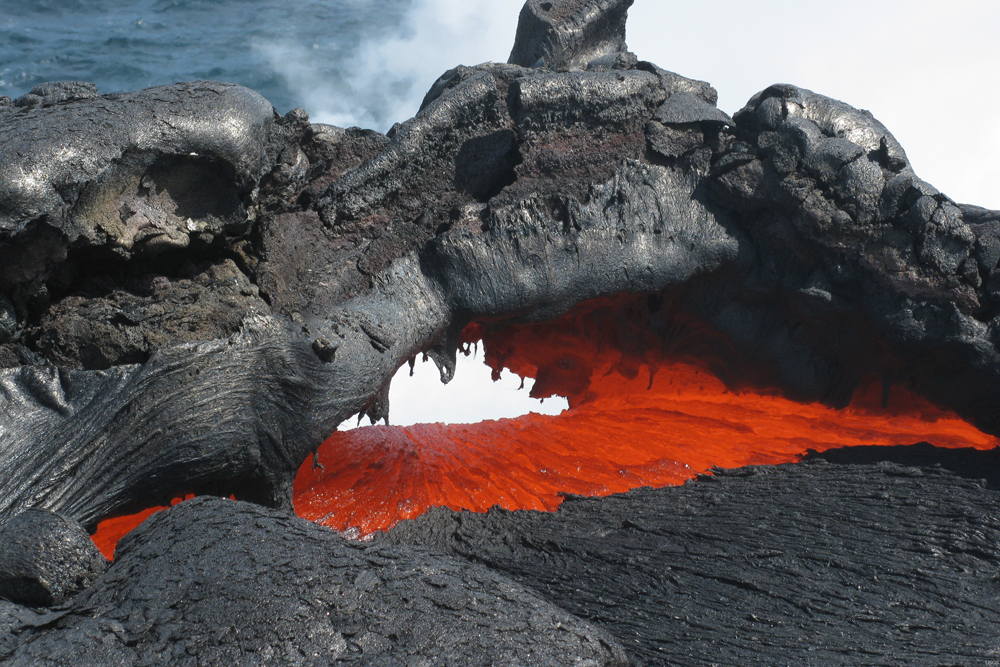
Lava exited a tube at the sea cliff near Kalapana and poured out into the ocean at a growing lava delta. Photo taken July 26, 2010.
Halema'uma'u rock fall plume
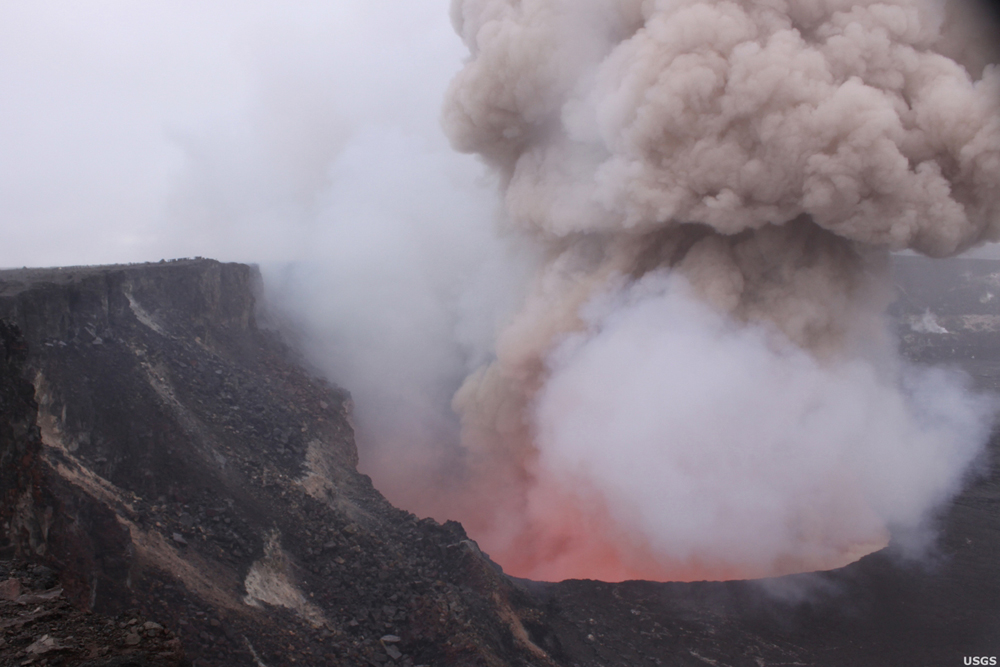
This image of a dusty plume produced by rocks collapsing from the wall of Halema'uma'u Crater was captured by a time-lapse camera on Dec. 21, 2011.
Kilauea volcano from space
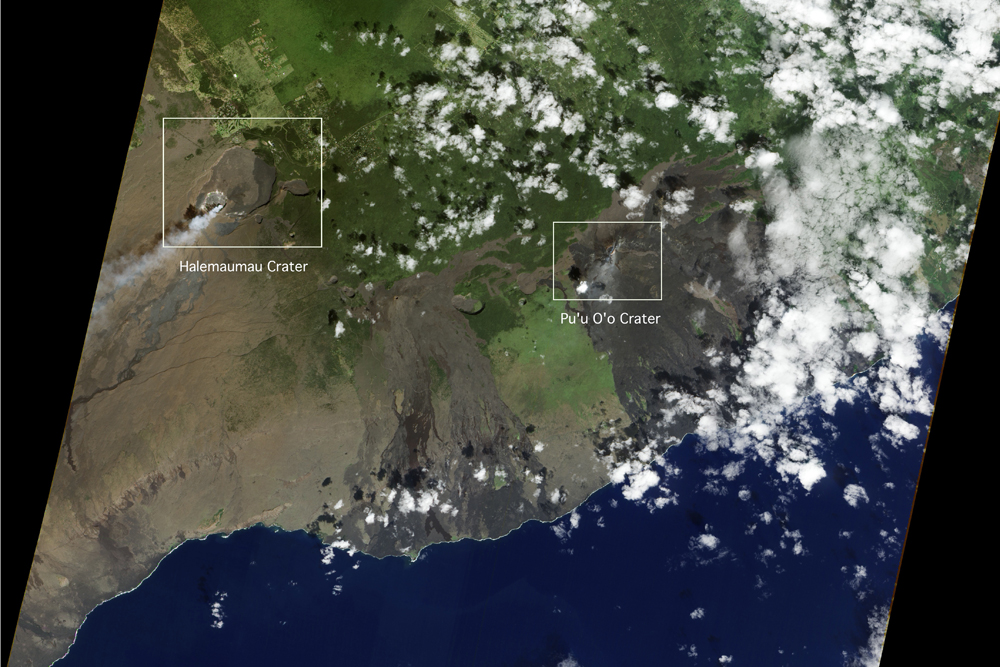
The Advanced Land Imager on NASA's Earth Observing-1 satellite snapped this image of Hawaii's Kilauea volcano on Jan. 28, 2012. The natural-color view shows Halema'uma'u crater and Pu'u O'o crater.
Sign up for the Live Science daily newsletter now
Get the world’s most fascinating discoveries delivered straight to your inbox.
Halema'uma'u Crater surge
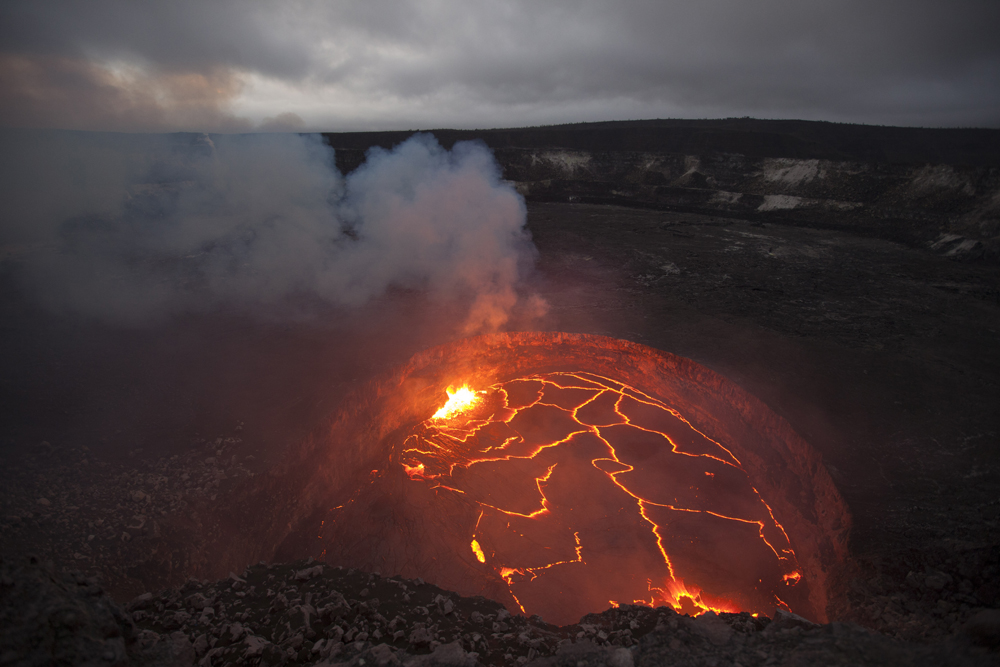
View of the lava lake in Halema'uma'u crater on Oct. 22, 2012. The next day, the lake hit its highest level since the vent opened up in March 2008.










